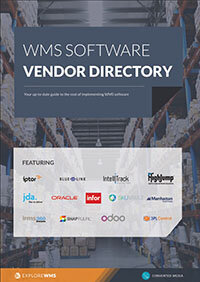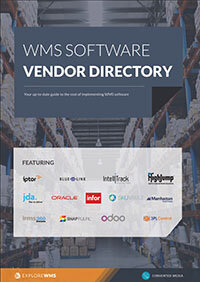Five analytics features to make the most of your WMS data
Can your WMS data tell you if you’re running as efficiently as you can?
Analytics plays a pivotal role in running a more successful business, and new capabilities exist within today’s WMS to deliver a wide range of performance analytics and reporting that highlight how successful or unsuccessful your team is at delivering goods to your customers.
Understanding WMS analytics opportunities requires a look at the core metrics that can paint a clear picture of your business. Let’s take a look at five of the more important WMS data points that you can use to run your warehouse more efficiently and save money after this holiday season ends.
1. Total landed cost - revenue
For warehouses tied to specific manufacturers or if you’re creating and shipping your goods, the total landed cost of each item provides you with a granular look at what drives your revenue and keeps you in business.
Find WMS with high-quality data analytics features using our comprehensive vendor directory
This is important in terms of WMS data because you’re also able to calculate the time each product is present in your inventory and compare that to demand forecasting. Comparing total landed cost relative to time spent in the warehouse across all of your products not only shows which products generate the most revenue per unit but also may identify underperforming goods that are taking up valuable space.
2. Finished inventory optimization – customer service
Businesses that use multiple warehouses can benefit from predictive WMS analytics when looking at their finished inventory optimization WMS reports. This dataset allows you to determine what stock you have, how to optimize your inventory budget for new stock, and where to place it in your supply chain.
WMS data around the finished inventory optimization metric also provides clear guidance for recommended levels of safety stock plus the ability to segment inventory for different regions, customers, and fulfillment strategies. It’s a core metric for understanding demand and how to position yourself to provide a high-quality customer service experience.
3. Replenishment planning analytics – product availability
Worthwhile WMS reports provide you with quick answers to common questions, including when and where should I ship my goods. Replenishment planning analytics and metrics allow you to integrate your orders and staging across multiple levels such as your own individual channels, wholesalers or distributors, and your retail partners.
This set of WMS analytics focuses on providing visibility into fulfillment based on warehouse constraints so that you always have the products that your channels need available while managing stock based on your capacity for storage and handling.
4. Procurement analytics – cost management
Most warehouses rely on third-party partners for some of their goods, whether that’s specific inventory for sale or simply to replenish packaging materials. Procurement analysis can help you track and use WMS data to determine vendor costs and quality, plus look at their performance across the history of your relationship.
This analysis can guide you in creating a scoring model to use for vendors. Selecting the right vendor to manage costs, consistently deliver high-quality products, or meet your turnaround time demands is easier with these WMS reports.
5. Performance metrics – team management
The heart of any analytics package for your WMS must be performance metrics for your entire warehouse. You need the flexibility to look for comparables across your operations and to create a successful baseline based on the data can and do collect.
Performance metrics should track everything from receiving times and schedules to your fill rates and the timeliness of your order filling. Top WMS data and analytics will allow you to drill down to look past the overall performance to deliver analysis related to shifts, teams, or individuals.
Team management can go a long way to improving your customer retention rate, which is another handy metric for you to track with your WMS reports.
Free white paper

WMS vendor directory
Save hours of WMS vendor research with this free guide

Related articles
-

WMS SQL vs Oracle database: an objective comparison
What's the difference between an SQL and Oracle database for WMS
-

Mission-critical features of food lot traceability software
What features of food traceability software will help you during a food recall
-

How to test your WMS data before go-live
Four ways to test your WMS data prior to your final go-live

